Eskimos have 50 names for snow but most climbers just have “rock.”
It’s all about friction
What makes Pennsylvania bouldering so unique and fun is the large amount of sticky rock in the state. By sticky I mean rock texture that has unusually good friction for hands and climbing rubber. Climbing on sticky rock is really fun because you feel like a Gecko – hands and feet sticking to holds smaller than you think possible at angles that defy gravity. Sticky rock glues you to sloper holds that shouldn’t work with feet sticking on impossibly steep angles. And that is really fun and satisfying and greatly opens up the possibilities for amazing sequences over rock.
Now let me emphasize that super sticky climbing rock is actually rather rare and most people haven’t actually climbed on any. Yosemite granite, Gunks quartzite, western limestone, Colorado granite gneiss – none of these are particularly sticky. Let me explain why.
What makes rock sticky has to do with the size and shape of the tiny grains that make up the rock. Climbing friction is determined by the interaction between individual edges and points on rock grains and your skin or climbing rubber. The faces of rock crystals tend to be smooth as glass so friction is mostly a function of crystal points and edges “catching” on skin or rubber. The more crystal “points” and the farther they stick out the more “grab” the rock has on your skin. Finer rock grains mean more points available to grab – but coarser grains usually means the points stick out farther.
Now I’m going to introduce a brand new climbing geology term that you lucky folks are the first to be introduced to. Rock resolution. You won’t find this term in any previous description of climbing geology because for some reason all other climbing geology writings have focused on typical geology stuff such as tectonic history or depositional environments… in other words trying to trick you into learning some geology – which is a very big subject. I’m going to focus more on how the geology of a given rock actually effects your climbing experience (related to that 50 names for snow thing).
Rock resolution is to brail as computer screen resolution is to vision. In other words you can’t get a climbing “edge” smaller than the size of the grains that make up that rock. If you climb on a granite made up of 1/2 inch wide crystals – you really can’t get a hold any smaller than 1/2 inch. Rock with poor resolution that gives just a few crystal points or edges for skin interaction ends up being painful. You can lay down on a bed of nails but just one or two alone will puncture you. Most climbing rock in North America is composed of individual mineral grains that are too large for optimal friction.
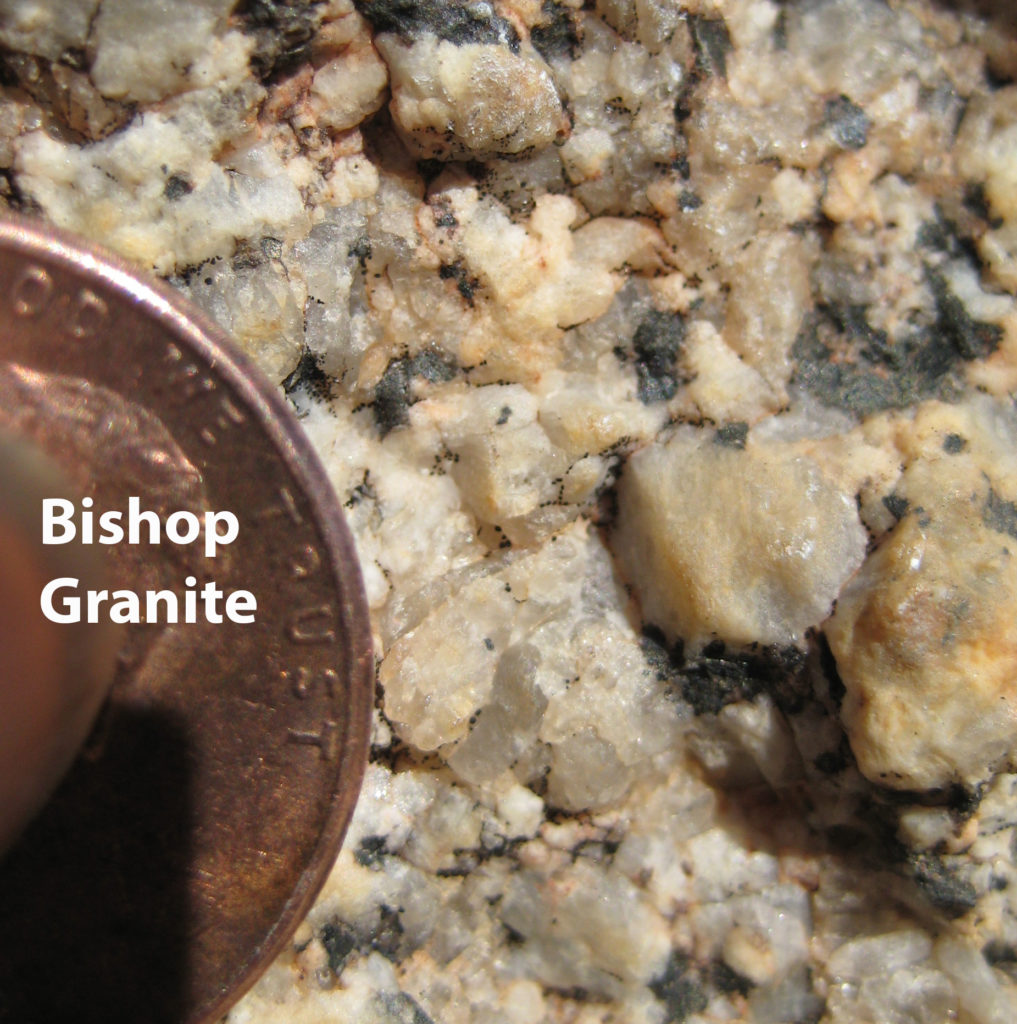
The Buttermilks at Bishop, CA is famous for bouldering but the glassy rock is not famous for friction. Notice the relatively large orangish somewhat rounded feldspar grains and the grey quartz surrounding it. This only leaves a couple crystal points or edges for your skin to latch on to. Poor friction and possibly painful as all your weight is held by a small part of your skin contacting one of these rare edges. French climbers on their first visit to the buttermilks were heard to remark “we have rock like this in France too – but we don’t climb on it.”
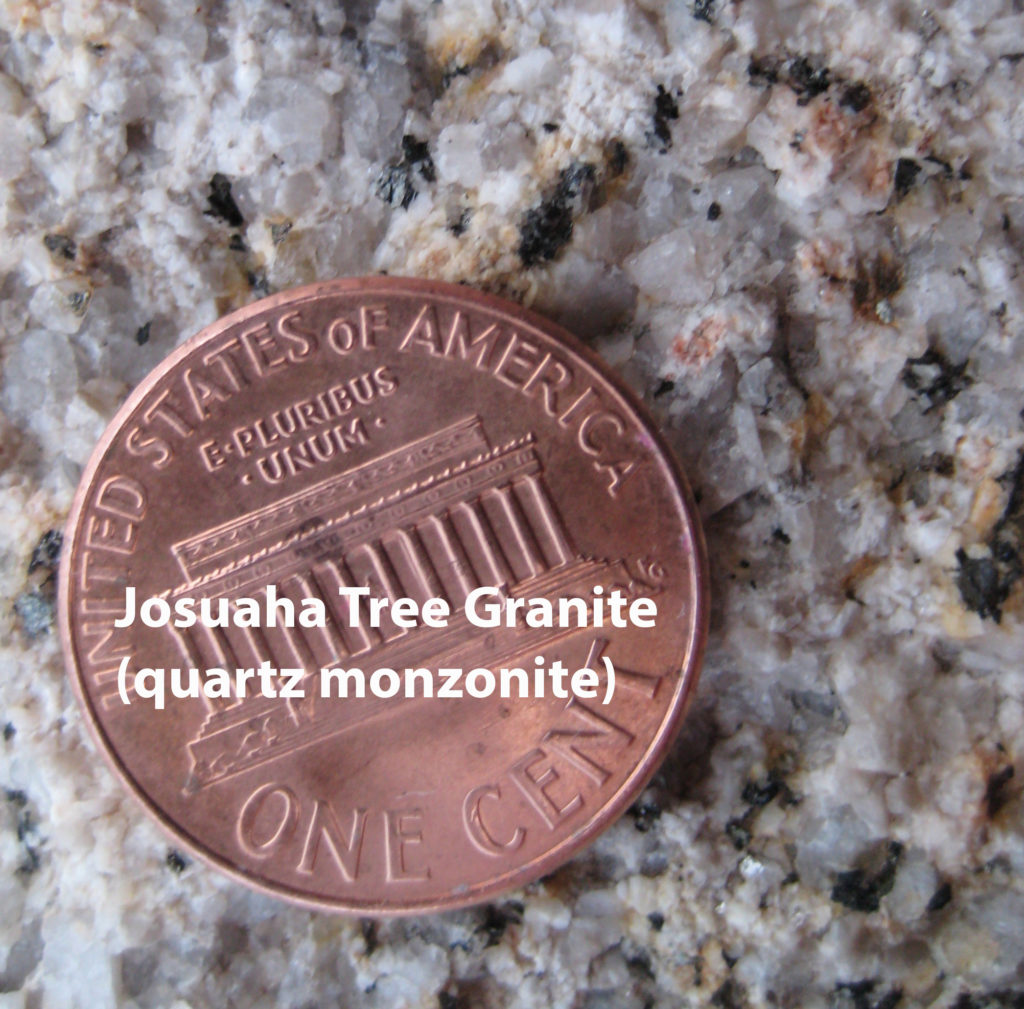
J-Tree is known for very rough rock – and compared to Bishop granite you can see it has smaller overall grains and more edges and points to stick up and catch shoe rubber and skin. But the grain size is still pretty big so the resolution of the holds isn’t great.
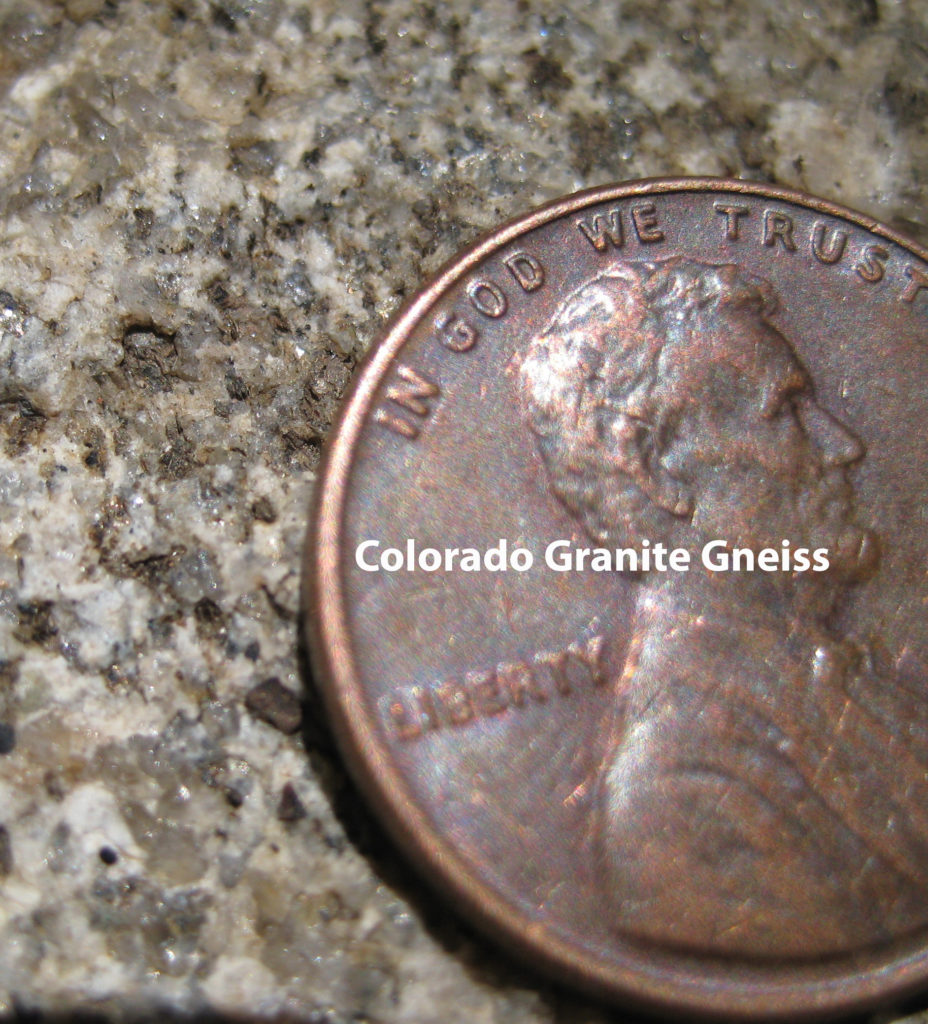
The granite gneiss that makes up lots of Colorado’s bouldering has medium sized grains with OK friction but they don’t stick out much. Better resolution than Bishop but poor compared to PA sandstone or Diabase. The brownish gunk in the photo is biotite which weathers into clay and does not contribute to friction.
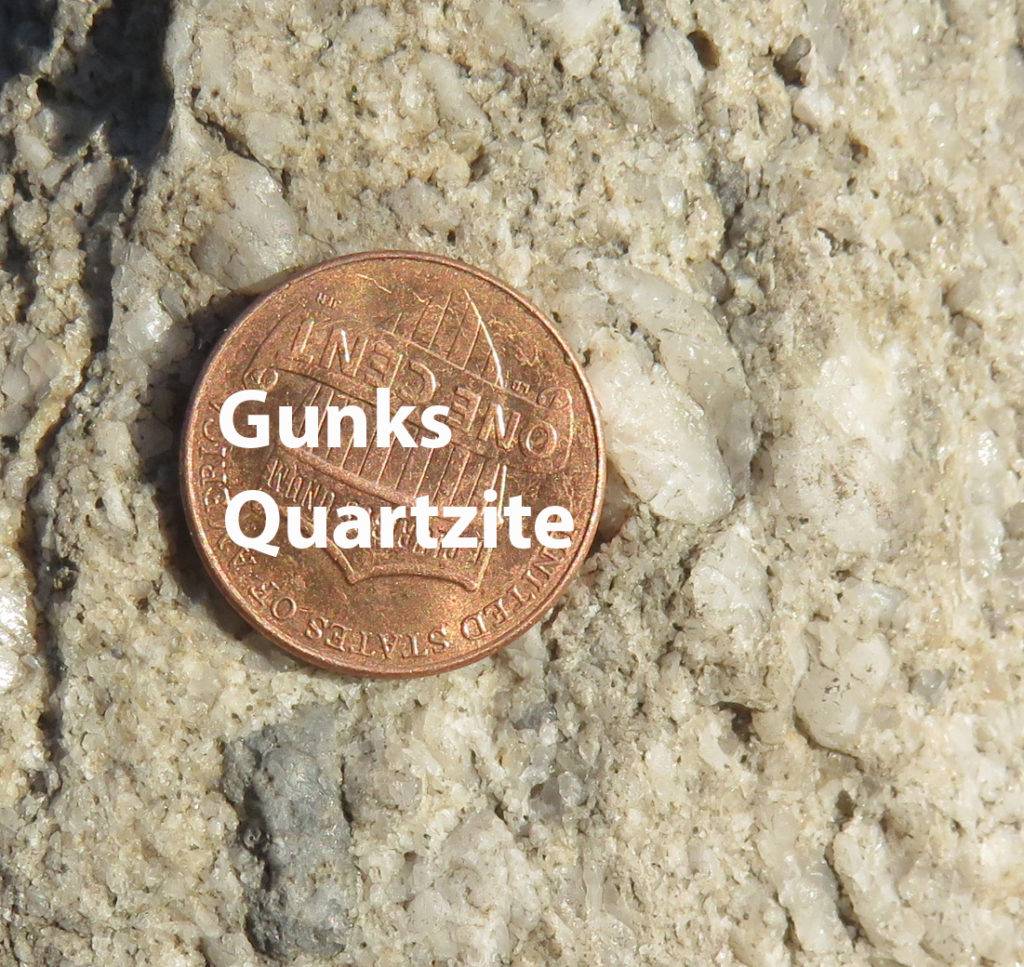
Gunks quartzite is a conglomerate with large, rounded quartz pebbles surrounded by smaller quartz crystals. Not great friction as so much of the rock is smooth quartz. Just a few sharp (painful) edges to catch skin.
Now let’s talk about PA’s sticky rock types – let’s start with sandstone.
Layers of rock are called formations to enable you to give a name to individual continuous bands of rock. Seeing as sedimentary rocks were at one time a beach or the mud offshore you end up with a continuous layer cake arrangement as the beach migrates from sediment continuously deposited from land.
The sandstone band of the Old Port formation outcrops at numerous locations southwest of state college to west of Huntingdon – and includes the popular bouldering area Hunter Rocks. The interesting thing about Hunters sandstone is that it lies beneath (older than) the Tuscarora quartzite (which is the formation that makes up Seneca rocks) so it is really old rock (Devonian – around 400 million years ago). The odd thing about Hunter rocks is that it’s still a sandstone – when it should be a quartzite given its old age and depth of burial. Hunters consists of a pure white quartz sandstone so pure it’s mined for silica glass near Huntingdon. Trivia tidbit – the glass they used to make the 200-inch Mt. Palomar telescope came from one of these sandstone quarries. Hunters sandstone is older (buried deeper) than the similar composition Tuscarora quartzite located on the adjacent ridge top from Hunter rocks. Why is Hunters a sticky sandstone and not a smoother quartzite like the Tuscarora?
Quartzite is a metamorphosed sandstone where the individual quartz grains are fused into one mass by heat, moisture and pressure to form a solid quartz unit. When you break a quartzite it breaks through individual grains – and this makes for poor climbing friction as it forms smooth fracture surfaces instead of individual grains sticking up. One likely explanation of how the Hunters rock formation escaped the quartz grain fusing process is lack of water (needed to mobilize quartz). It’s likely this formation was filled with natural gas which kept the water out and enabled the rock to stay a sandstone. As a result the quartz sand grains only fuzed together where they were touching from the extreme pressure. This is fortunate for climbers as the rock is relatively strong for a sandstone but has enormous friction – the best of both worlds – quartzite strength and sandstone stickiness.
Gritstone and Hunters sandstone should be pure white – the tiny spaces between the grains enables tiny green lichen to grow giving the overall rock a greenish grey color. This is actually a sign of sticky rock. The quartzite conglomerate in northeast PA is usually pure white, which means no space between the grains for tiny plants and much poorer friction.
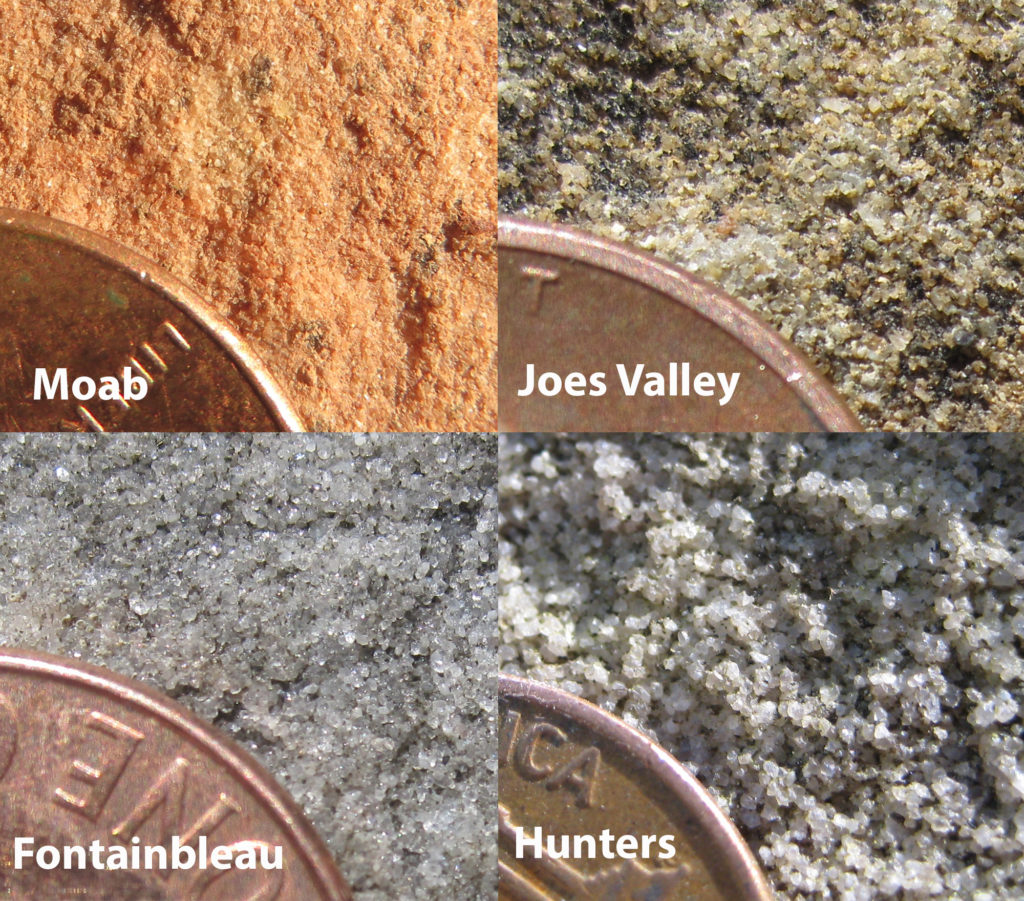
Moab photo caption: Tons of this red Wingate sandstone out west. It’s very fine grained and typically cemented together by that red stuff (hematite). Unfortunately it’s not all that well-cemented together and sand grains are constantly breaking away adding a ball bearing effect, sometimes counteracting friction.
Joe’s Valley sandstone photo caption: Here is an example of a Western rock that actually has decent friction and resolution. Notice the plethora of quartz sand grains sticking up providing numerous points and edges for skin and shoe rubber to latch onto.
Fontainebleau sandstone photo caption: Notice the similar appearance of Hunters rock to the famous fontainebleau sandstone. One difference is that the sand grains at Font aren’t quite as angular and pointy – so it has less friction. The Hunters rock sand grains were deposited in water (it was a beach) – the font sand is aeolian – or wind deposited (old desert). Wind blown sand gets the edges rounded off. So compared to Fontainebleau sandstone Hunters is more sticky.
Hunters sandstone photo caption: Compared to the other sandstone examples it’s easy to see why Hunters has the most friction. Notice angular-shaped grains with lots of edges to stick to skin. And the surface isn’t flat – there are lots of little divots in the texture so you get all kinds of skin pad-to-rock contact and interference fit. This is why Hunters sandstone might be the stickiest rock on the planet.
Gritstone
The gritstone in the English Peak District is worshiped by climbers, among whom it has a cult status and is often referred to as “God’s own rock.” There is a reason for that. Grit is amazing for climbing because it’s an incredibly durable rock with classic granite-like shapes and enormous friction – especially for feet. People are often confused as to exactly what Gritstone is as it’s not a proper geologic term. Essentially Gritstone is a hard sandstone with larger sized grains making up the rock. Think of sandstone as medium, 80-grit sandpaper while gritstone is a coarse 20-40 grit. Provided the individual gritstone grains are angular it makes for crazy levels of friction. Climbing rubber can stick on a featureless gritstone slab at a steeper angle than any other type of rock! Grit makes for sticky hands but the smallest of finger holds tend to rip your tips after multiple attempts. Fortunately, most grit holds tend to be whole hand slopes or pinches.
Outside of England, Pennsylvania has probably the highest concentration of gritstone anywhere. There is some in West Virginia and New York but I haven’t encountered any elsewhere in America. Gritstone in the state occurs in Mississippian and Pennsylvanian age rock (around 300 million years old) mostly in western and northern PA. One exception is Squirrel Rock in Northeast PA.
One thing that makes Pennsylvania Grit unique compared to English Grit is the presence of strategically placed pockets which are often key to making climbs go. Brian McCall climbed with a bunch of Brits in Font and had a hard time convincing them PA had gritstone because they insisted their gritstone didn’t have pockets. The pockets in PA grit aren’t formed the same way as most sandstone pockets like at Red River Gorge or Hunters, but seem to be randomly placed – most likely the result of pieces of wood or other foreign matter embedded in the coarse beach sand that disappeared over time.
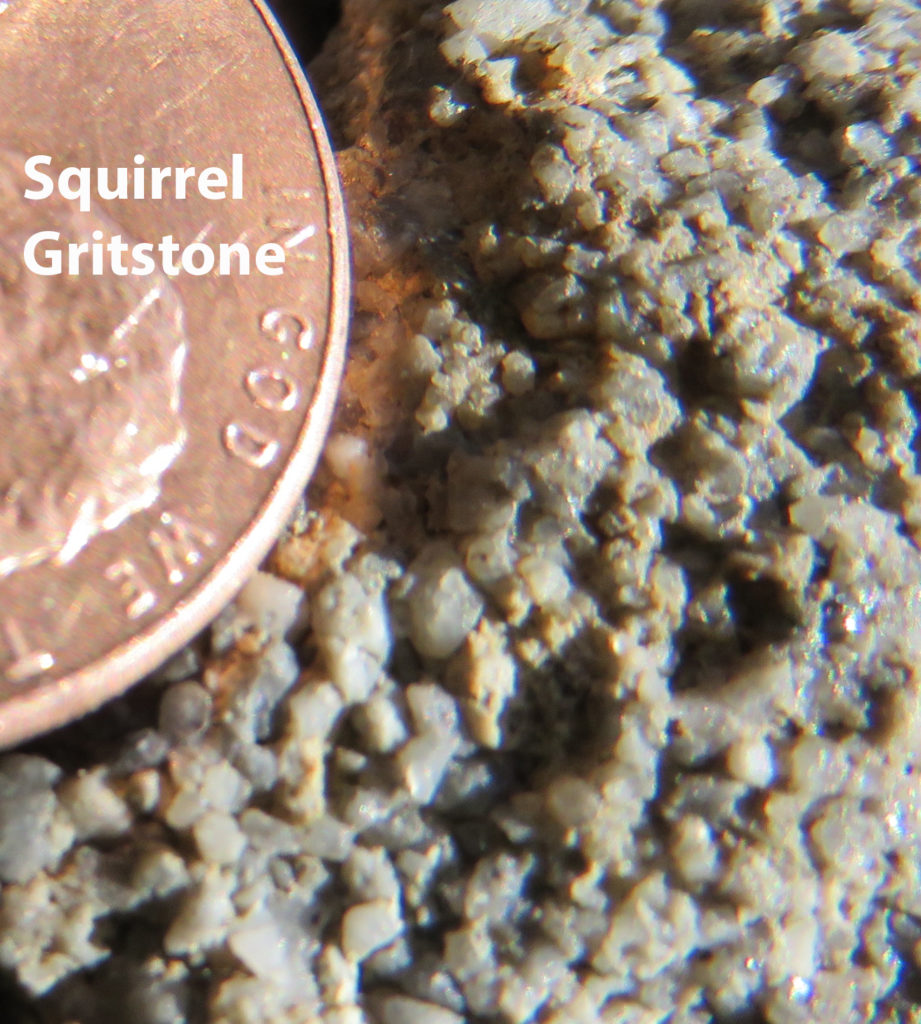
There is lots of variety in the size of grains making up gritstone, but the common factor is larger, very angular grains that stick up to catch skin and shoe rubber.
Diabase
Southeastern climbers are blessed with a large swath of Diabase rock in bands running from south of Gettysburg to Northern Bucks county into New Jersey. Unlike the sedimentary rock that makes up most PA rock, Diabase is an Igneous rock – intruded into dikes and sills as molten magma. PA diabase is Triassic age thought to be associated with continental rifting and the opening of the Atlantic ocean.
Southeast PA is heavily populated, but the diabase tends to form hills and makes for difficult farming so it tends to be forested – escaping urbanization and farm use which occupies most of southeast PA land. Although diabase rock makes for difficult farming, plants actually love growing on this stuff. In the summer, diabase areas are a green humid jungle environment compared to PA’s sandstone and gritstone areas. But what the summer takes, the winter delivers as the relatively warmer Southeast PA climate and temporary snow enables many climbable days on this very sticky rock.
Friction-wise, Diabase is very similar to a finer gritstone or coarse sandstone as the size of the grains are similar and stick out nicely. Diabase is composed of pyroxene (the black grains) and Plagiocase (the white grains) giving the rock a dark grey color. Brown or reddish colors are from the iron in the pyroxene weathering to rust like minerals.
Fresh diabase doesn’t have particularly good friction, but you won’t find any unweathered diabase in PA aside from quarries, railroad ballasts and monuments (also known as black granite). When the diabase weathers it brings out the very angular nature of how the individual plagioclase and pyroxene grains tend to grow together when the rock forms – revealing lots of points and edges to stick to skin and climbing rubber.
An unfortunate aspect of diabase is that the minerals that make it up – pyroxene and plagioclase, are 5-6 on the Mohs hardness scale, while quartz is a 7. This means diabase polishes! I have already noticed this on the Porcelain slab at Gretna – 15-years ago, no polish. Now you will have an easier time using the smaller footholds as the larger ones are a bit polished and less sticky. The best way to mitigate this problem is to clean your shoes! Every diabase climber should carry a clean rag to thoroughly clean the bottom of your soles before climbing anything diabase. The polishing comes from small bits of dirt embedded in shoe rubber. Your shoes need to SQUEEK or you are a rock polishing geek.
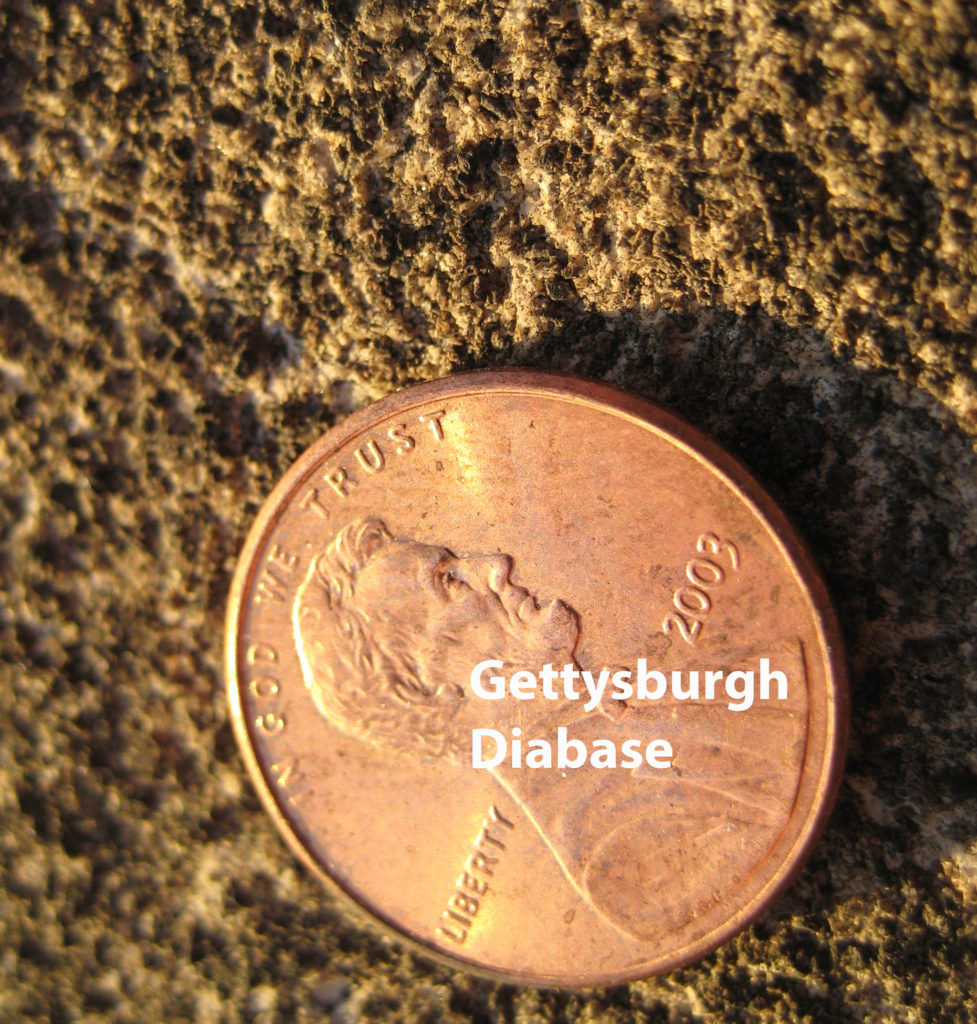
Notice the very angular, irregular grains sticking out to grab hold of skin.
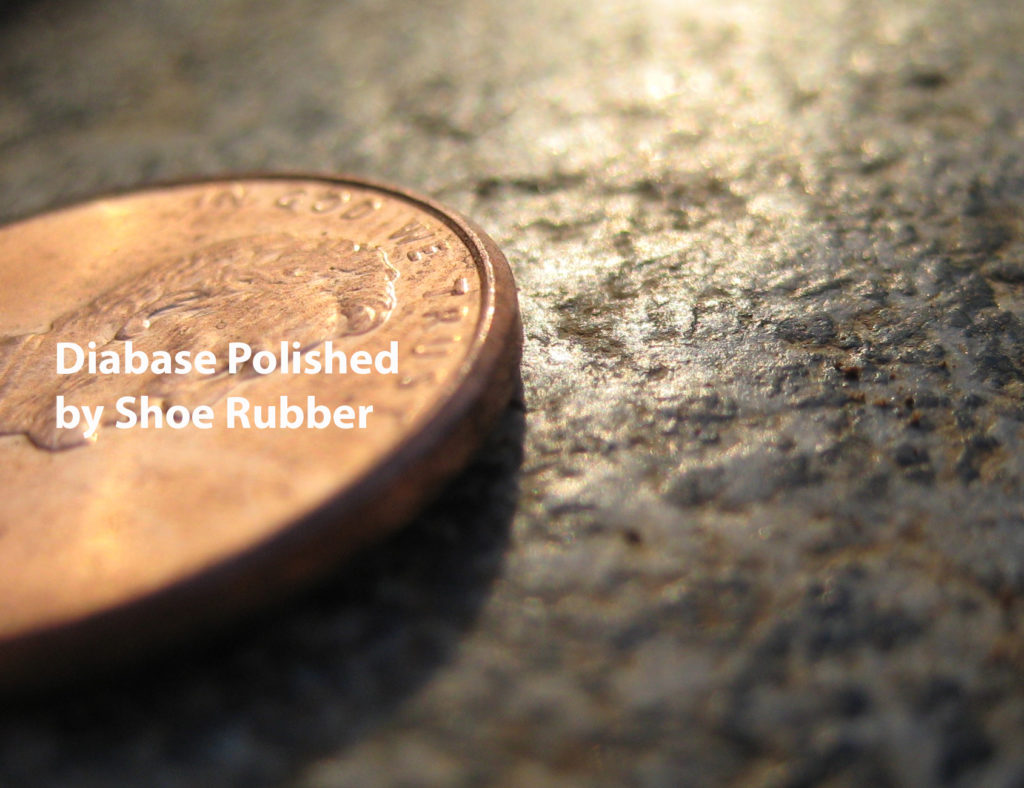
Diabase at Devil’s Den Gettysburg, polished from tourists shoes.
